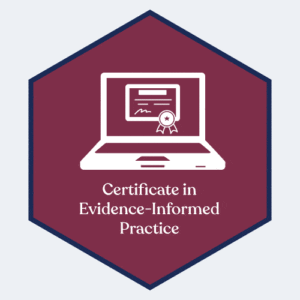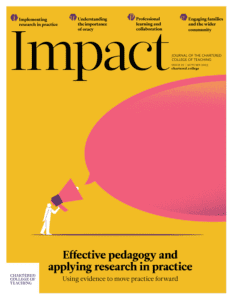Lightening the load: Integrating cognitive load, schema theory and progression mapping in the primary classroom

8 min read
ALEX REYNOLDS, DIRECTOR OF PRIMARY LEARNING & CURRICULUM, NORTHERN EDUCATION TRUST, UK
HANAH HERON, DIRECTOR OF EDUCATION, CLIC TRUST, UK
KIRSTIN MULHOLLAND, ASSISTANT PROFESSOR IN EDUCATION, NORTHUMBRIA UNIVERSITY, UK
LOUISE JACKSON, INDEPENDENT EDUCATION CONSULTANT, WYE EARLY YEARS, UK
NICOLA CHERRY, EARLY YEARS DELIVERY MANAGER AND INDEPENDENT EARLY YEARS CONSULTANT, UK
Effective teaching is complex and nuanced. It requires a deep understanding of the principles that underpin it. Teachers face the challenge of teaching complex concepts in a way that is accessible to all learners. In this article, we explore this challenge through the lens of cognitive load theory, schema theory and progression mapping, as we unpick a primary curriculum example.
Take this exposition from a Year 6 geography lesson. A teacher is explaining how to use maps:
Okay, we’re going to be using maps today to plan a route. Here’s my example, you can see how I’ve colour-coded it and I ca
Join us or sign in now to view the rest of this page
You're viewing this site as a guest, which only allows you to view a limited amount of content.
To view this page and get access to all our resources, join the Chartered College of Teaching (it's free for trainee teachers and half price for ECTs) or log in if you're already a member.
- Agarwal PK, Bain PM and Chamberlain RW (2019) The value of applied research: Retrieval practice improves classroom learning and recommendations from a teacher, a principal, and a scientist. Educational Psychology Review 31(2): 365–382.
- Ambrose SA, Bridges MW, DiPietro M et al. (2010) How Learning Works: Seven Research-Based Principles for Smart Teaching. San Francisco: John Wiley & Sons.
- Brown PC, Roediger III HL and McDaniel MA (2014) Make It Stick: The Science of Successful Learning. Cambridge, MA: Harvard University Press.
- Centre for Education Statistics and Evaluation (CESE) (2018) Cognitive load theory in practice: Examples for the classroom. Available at: https://education.nsw.gov.au/content/dam/main-education/about-us/educational-data/cese/2017-cognitive-load-theory-practice-guide.pdf (accessed 3 July 2023).
- Dunlosky J, Rawson KA, Marsh EJ et al. (2013) Improving students’ learning with effective learning techniques: Promising directions from cognitive and educational psychology. Psychological Science in the Public Interest 14(1): 4–58.
- Education Endowment Foundation (EEF) (2021) Cognitive science approaches in the classroom: Evidence review. Available at: https://educationendowmentfoundation.org.uk/education-evidence/evidence-reviews/cognitive-science-approaches-in-the-classroom (accessed 3 July 2023).
- Evidence Based Education (2022) What every teacher needs to know about learning and memory, 15. Available at: https://evidence-based-education.thinkific.com/courses/take/resource-library/pdfs/37633330-understanding-memory-learning
- Mayer RE (2008) Applying the science of learning: Evidence-based principles for the design of multimedia instruction. American Psychologist 63(8): 760–769.
- Mayer RE and Moreno R (2003) Nine ways to reduce cognitive load in multimedia learning. Educational Psychologist 38(1): 43–52.
- Mooney KE, Prady SL, Barker MM et al. (2021) The association between socioeconomic disadvantage and children’s working memory abilities: A systematic review and meta-analysis. Plos One 16(12): e0260788.
- OECD (2020) Curriculum Overload: A Way Forward. Paris: OECD Publishing.
- Paas F and Sweller J (2012) An evolutionary upgrade of cognitive load theory: Using the human motor system and collaboration to support the learning of complex cognitive tasks. Educational Psychology Review 24(4): 27–45.
- Roediger III HL and Butler AC (2011) The critical role of retrieval practice in long-term retention. Trends in Cognitive Sciences 15(1): 20–27.
- Rohrer D and Taylor K (2007) The effects of overlearning and distributed practice on the retention of mathematics knowledge. Applied Cognitive Psychology 21(1): 24–40.
- Weinstein Y and Sumeracki MA (2018) Understanding How We Learn: A Visual Guide. Abingdon: Routledge.
5
1
vote
Please Rate this content
Subscribe
Please login to comment
0 Comments
Oldest
Newest
Most Voted
Inline Feedbacks
View all comments











